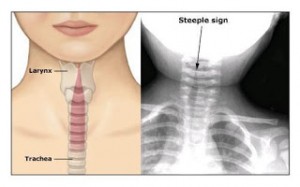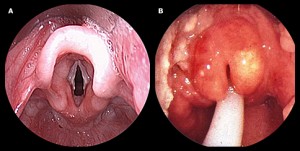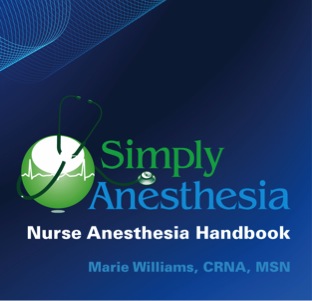Jun 13
14
Croup vs Epiglottitis: Which One is a Medical Emergency?
Stridor is the high-pitched sound made by turbulent flow of respiratory gases through a narrowing in the airway. It can be biphasic, inspiratory or expiratory depending on the anatomic location.
Croup is a respiratory infection with a characteristic cough, inspiratory stridor (laryngeal or supraglottic obstruction) and possible respiratory distress. Usually caused by the Hemophilus parainfluenzae virus type 1, it affects children between 1 and 3 years of age. Manifestations include cold symptoms, low fever, barking cough and hoarseness. Treatment includes oxygen, steroids (dexamethasone 0.6 mg/kg PO/IM) and racemic epinephrine (to relieve airway edema and decrease airway resistance due to swelling). Avoid racemic epi in children with glaucoma and ventricular outflow obstruction.
Epiglottitis is an inflammation of the epiglottis due to an infectious process. It can involve other structures such as the arytenoid, false cords and posterior tongue leading to airway obstruction. Most often bacterial in origin due to Hemophilus influenzae type B, it affects children between 2 and 5, however the median age is increasing over the past decade. It presents acutely in otherwise healthy children with a fever as high as 104F (40C). Epiglottic inflammation occurs quickly with the child sitting forward to use the accessory muscles of respiration and pain in the throat. Salivation is prominent with difficulty swallowing. Treatment includes keeping a parent in attendance at all times to keep the child calm, oxygen, sitting position, immediate intubation. Diagnosis is confirmed through radiologic studies showing the steeple sign representing a uniform narrowing of the subglottic airway by inflammation.
| CROUP | EPIGLOTTIS | |
| Etiology | Parainfluenza virus | Hemophilus influenza |
| Age | 4 mo to 2 yrs | 2-5 yrs |
| Onset | Subacute exacerbation of preexistent URI | Acute |
| Temperature | Low-grade fever | High fever |
| Course | Usually mild, stridor may worsen at night | Rapid progress of symptoms |
| Symptoms | Barky cough, stridor | Dysphagia, sore throat, dysphonia, respiratory distress |


 Email us! Get your copy today.
Email us! Get your copy today.